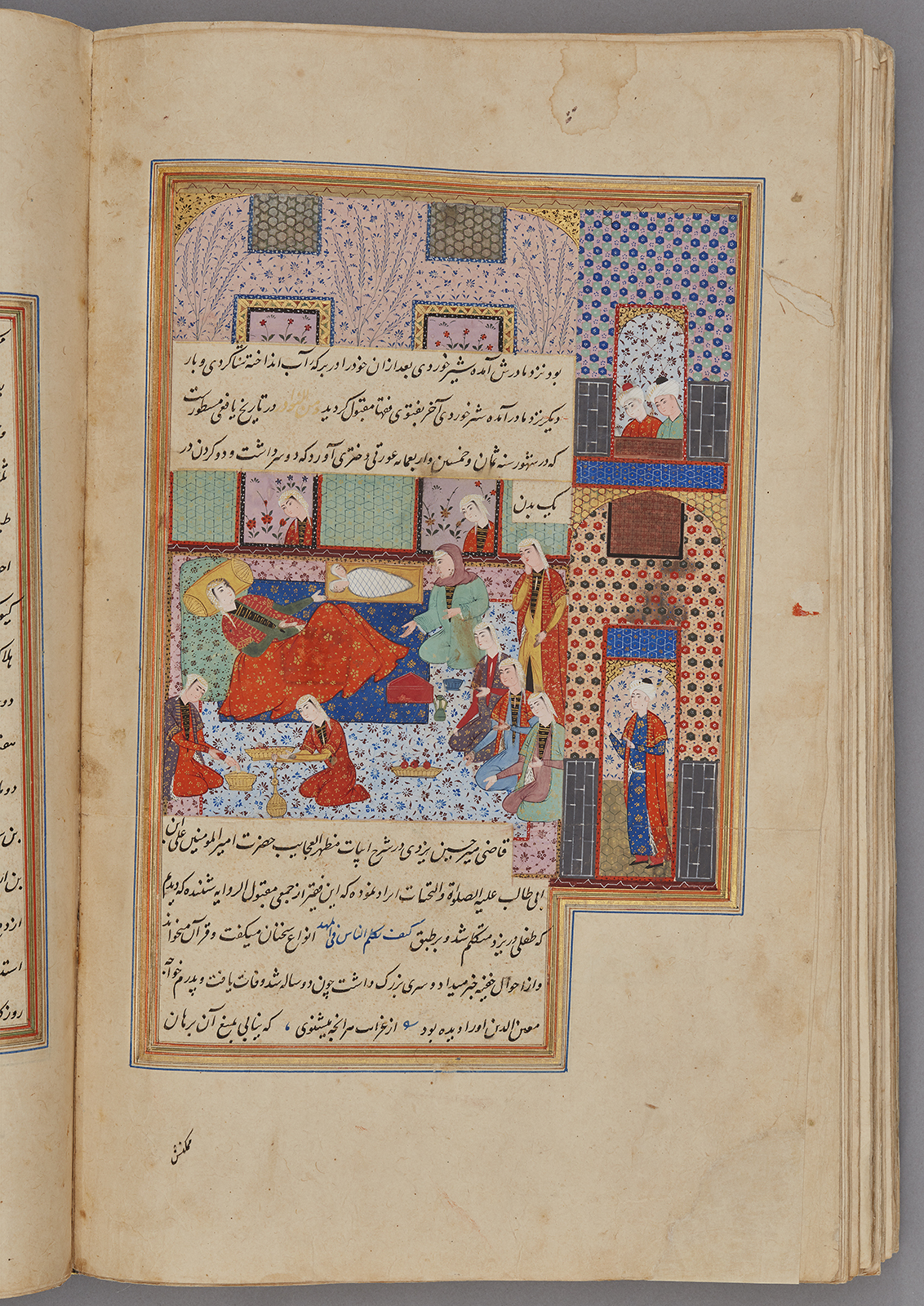Click on the image to zoom
A woman has given birth to a two headed child, Folio from a manuscript of Nigaristan
- Accession Number:AKM272.f235v
- Creator:Author: Ahmad b. Muhammad Ghaffari, Persian, died 1567 Scribe: Ahmad al-Shirazi
- Place:Iran, Shiraz (probably)
- Dimensions:38.7 cm × 25 cm × 6.4 cm
- Date:1573-74 CE/980 AH/AH 980
- Materials and Technique:Ink, opaque watercolour, and gold on paper
The miniature painting "A woman has given birth to a two headed child" is from an intact manuscript of Kitab-i Nigaristan, a collection of anecdotes and historical incidents written in prose by the historian and scholar Ahmad Muhammad Ghaffari (1504–1567/68) of Kashan in 1551–2. This illustrated manuscript, dated 1573, was probably produced in a Shiraz workshop.See AKM272 for more information about the manuscript and links to the other illustrations.
Further Reading
The illustration depicts an exterior and an interior of a room as two different compartments, which are divided into two vertical fields. On the left, between two text boxes, is the main scene: a woman lies on a blue patterned mattress surrounded by a group of other women. Next to the reclining woman lies a small baby in diapers, with two heads peeking out of it.
The section on the right of this illustration shows a tile and brick façade. It is possibly the façade of the same room. This spatial division and use of two simultaneous perspectives (the interior and exterior of a scene) is typical of other illustrations in the Nigaristan.
The text on this folio reports this strange birth without further elaboration. In the text field above, other strange events are reported, but they have nothing to do with the depicted scene.
The narrative genre of the nadira, meaning peculiarity, includes anecdotes about oddities and miracles that refer to a historical or literary source and are narrated in a historical context. These strange events and miracles occur to rulers, scholars, viziers, and ordinary people in Iranian history from the introduction of Islam to the time of the Safavids (1501–1722). They often contain a moral lesson.
- Elika Palenzona-Djalili
References
Sims, Eleanor. Peerless Images: Persian Painting and Its Sources. New Haven and London: Yale University Press, 2002.ISBN: 9780300090383
Note: This online resource is reviewed and updated on an ongoing basis. We are committed to improving this information and will revise and update knowledge about this object as it becomes available.


